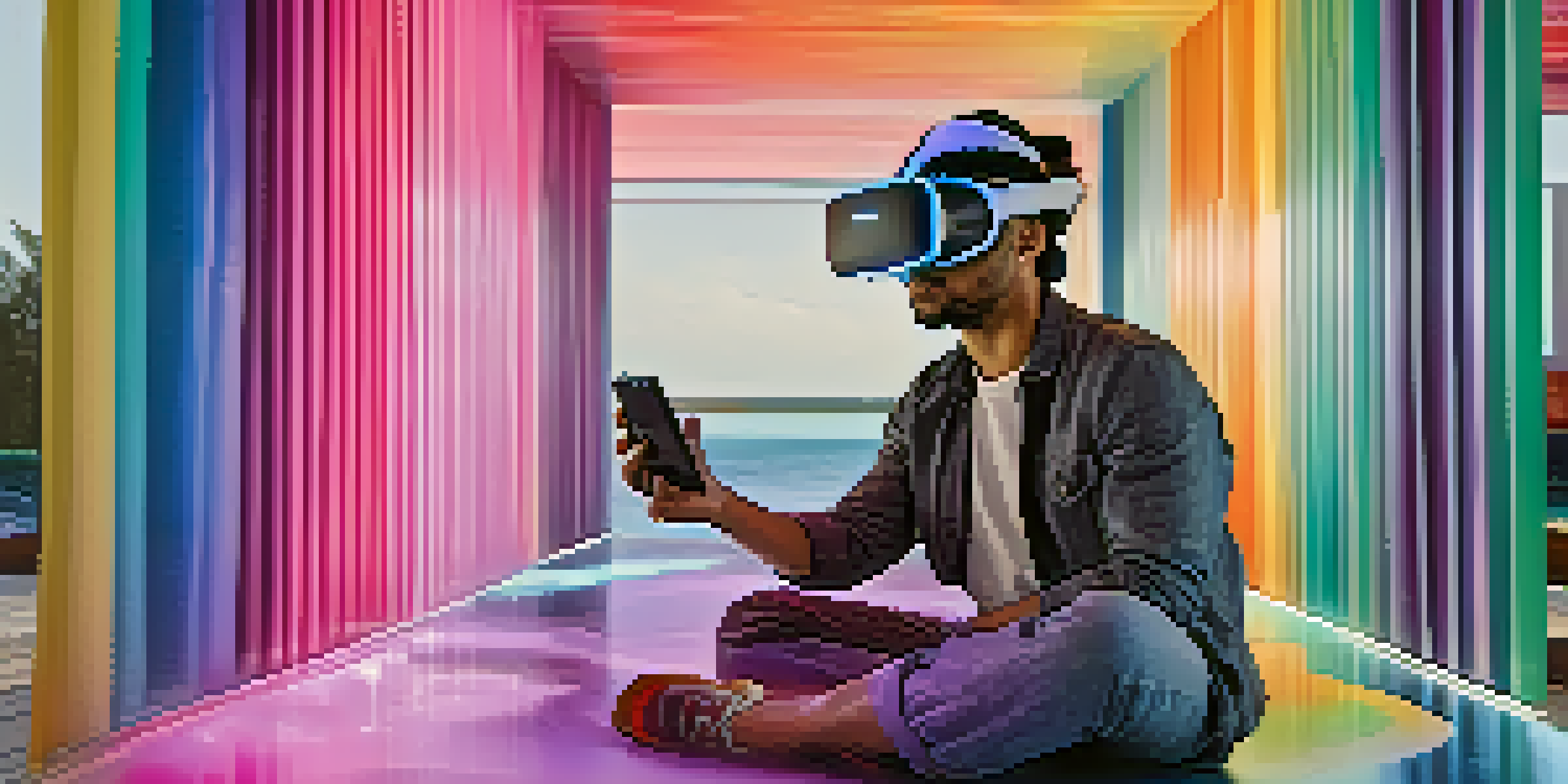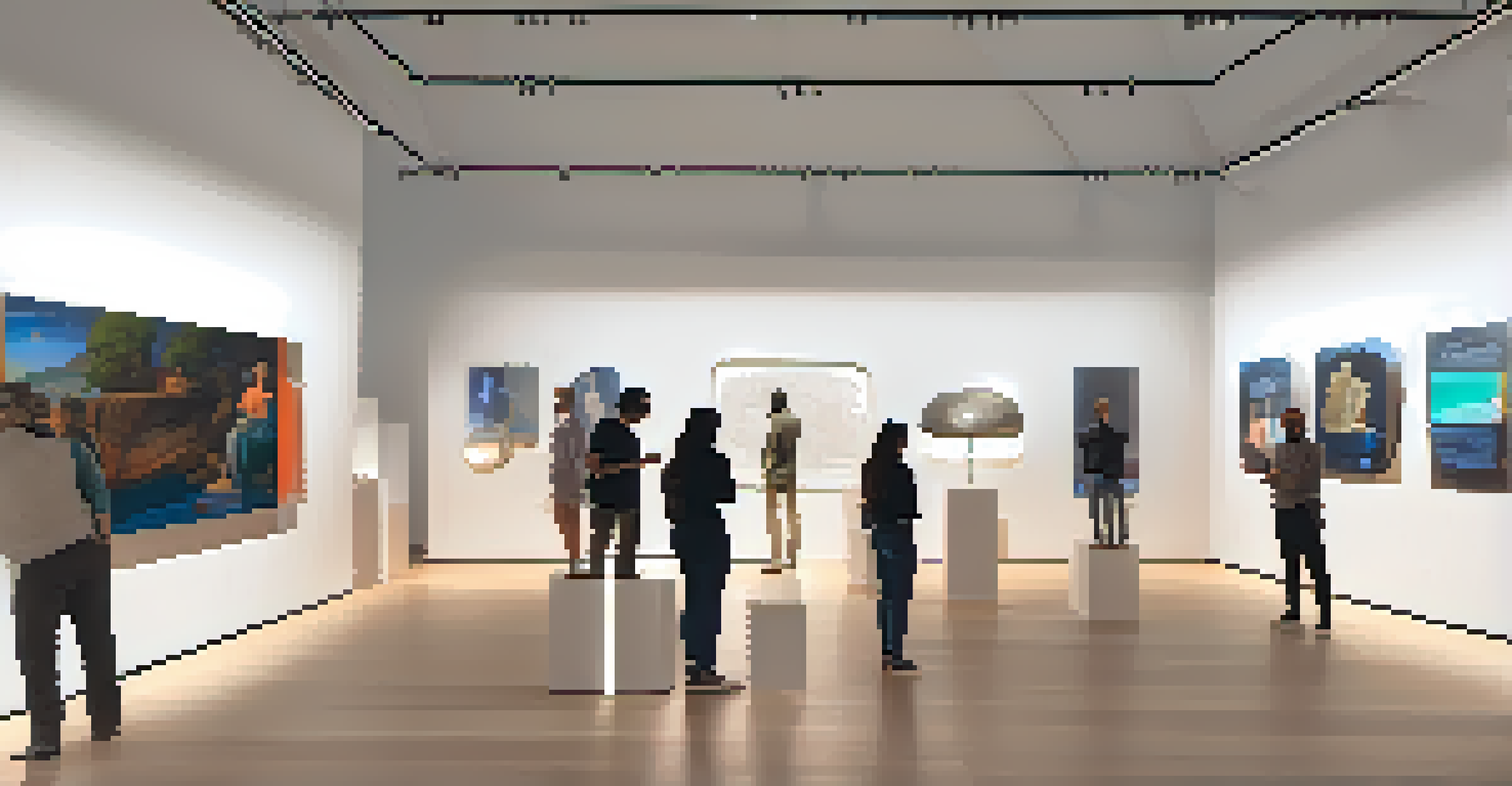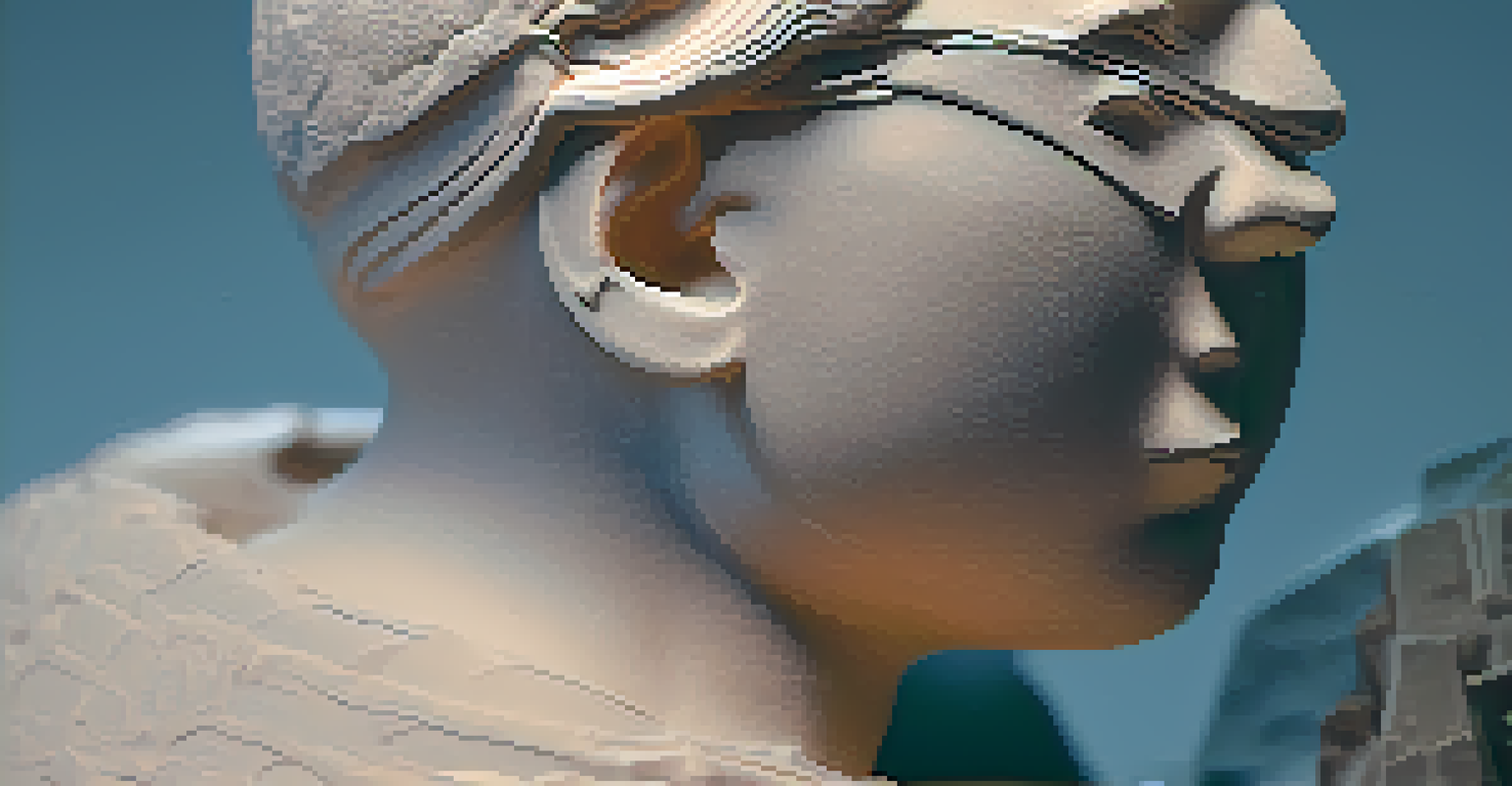Carving with VR: Bridging the Gap Between Art and Technology

Understanding Virtual Reality in Art Creation
Virtual reality (VR) is revolutionizing the way artists approach their craft. By immersing themselves in a digital environment, artists can create and manipulate 3D sculptures with a flick of their wrist. This technology removes the physical constraints of traditional tools, offering a canvas limited only by imagination.
Art is not freedom from discipline, but disciplined freedom.
Imagine stepping into a virtual studio where you can sculpt a statue as if you were working with clay, but with an endless supply of materials at your fingertips. Artists can easily undo mistakes or experiment with different shapes and colors without the mess of real-world materials. This makes the creative process more forgiving and fluid.
Moreover, VR allows for collaborative projects where multiple artists can work together in real-time, regardless of their physical location. This opens up new avenues for creativity, enabling a fusion of styles and ideas that can lead to innovative artworks.
The Tools Behind Virtual Carving
To create art in VR, artists rely on specialized software and hardware designed for immersive experiences. Popular platforms like Oculus Medium or Tilt Brush provide intuitive tools that mimic traditional carving and painting techniques. With controllers that track hand movements, artists can draw and sculpt in three dimensions as if they were working with tangible materials.

These tools often include features like haptic feedback, which gives artists a physical sensation as they carve, enhancing the reality of the virtual experience. This technology bridges the gap between the digital and physical worlds, allowing for a more authentic artistic expression. The result is a unique blend of art and engineering that is reshaping the creative landscape.
VR Transforms Artistic Creation
Virtual reality allows artists to create and manipulate 3D sculptures in an immersive environment, freeing them from traditional limitations.
Additionally, as VR technology continues to evolve, we can expect even more advanced tools and functionalities, making the art creation process more accessible and engaging for artists of all skill levels. The future of carving is not just about new tools; it's about redefining what art can be.
The Benefits of Carving in Virtual Reality
One major benefit of VR carving is the ability to experiment without fear of failure. Artists can try out bold ideas and techniques that might be too risky in the physical world. This freedom encourages creativity, allowing artists to push their boundaries and explore new concepts.
The best way to predict the future is to create it.
Additionally, VR can make the artistic process more inclusive. Those who may feel intimidated by traditional carving techniques can find a welcoming space in the virtual realm. With user-friendly interfaces and tutorials, aspiring artists can develop their skills at their own pace, fostering a new generation of creators.
Moreover, VR carving can lead to sustainable practices by reducing material waste. Artists can create stunning pieces without using physical resources, aligning with eco-friendly initiatives. This reflects a growing trend in the art world to prioritize sustainability while still encouraging innovative expression.
Challenges Faced by VR Artists
Despite its advantages, carving in VR does come with challenges. One of the most significant hurdles is the learning curve associated with new technology. Artists accustomed to traditional methods may find it difficult to adapt to the digital medium at first, which can be frustrating.
Another challenge is the potential for motion sickness that some users experience when using VR headsets. This discomfort can limit the amount of time artists can spend creating in a virtual environment, impacting their productivity. Developers are continually working on improving the technology to address these issues.
Inclusive and Sustainable Art
VR carving encourages creativity without the fear of failure and promotes sustainable practices by reducing material waste.
Lastly, the digital nature of VR art raises questions about ownership and authenticity. As artists create virtual sculptures, the transition of these pieces into the physical world can complicate traditional notions of art ownership. Balancing innovation with these concerns remains an ongoing discussion within the art community.
Showcasing VR Art: New Platforms and Exhibitions
As VR art gains popularity, new platforms and exhibitions are emerging to showcase this innovative medium. Virtual galleries allow artists to display their works to a global audience, breaking geographical barriers. This democratizes art, making it more accessible to everyone, regardless of location.
Platforms like VIVE Arts and Kunstmatrix provide opportunities for artists to exhibit their VR creations, allowing viewers to explore immersive installations from the comfort of their homes. These digital exhibitions can include guided tours, artist talks, and interactive experiences that engage audiences in ways traditional galleries cannot.
The rise of virtual exhibitions is also leading to unique collaborations between artists and technologists. This synergy is fostering a thriving ecosystem where creative ideas can flourish, and new artistic movements can emerge, redefining the future of art appreciation.
The Future of Carving: Trends to Watch
Looking ahead, the future of carving in VR is filled with exciting possibilities. As technology advances, we can expect even more realistic simulations that replicate the tactile experience of traditional carving. This could attract a wider range of artists, from novices to seasoned professionals.
Emerging technologies like artificial intelligence (AI) and machine learning are also making their way into the VR art scene. These tools can assist artists in generating ideas or even automating aspects of the creative process, allowing for a unique blend of human creativity and machine intelligence.
Challenges of Digital Art
Despite its benefits, VR art faces challenges such as a steep learning curve, potential motion sickness, and questions about ownership.
Finally, as more artists embrace VR, we may see a shift in how we define and value art itself. The lines between digital and traditional art are blurring, leading to a more inclusive and expansive understanding of creativity. This evolution promises to enrich the art world and inspire future generations of artists.
Conclusion: Embracing the Digital Canvas
Carving with VR represents a thrilling intersection of art and technology, opening doors to new forms of creative expression. As artists navigate this digital landscape, they are not just creating artworks but also redefining what it means to be an artist in the 21st century.
Embracing this technology allows for an exploration of endless possibilities, where traditional skills meet modern innovation. The potential for growth, collaboration, and sustainability in the art world is vast, and VR is at the forefront of this transformation.

In the end, whether you’re an experienced artist or just starting out, the world of VR carving invites everyone to step outside their comfort zone and explore the future of creativity. As we continue to bridge the gap between art and technology, who knows what masterpieces await us in the virtual realm?